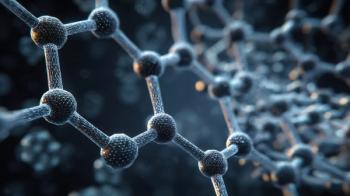
New Seed Oils Identified using GC–FID
Fatty acids found in fish oils have been linked to health benefits, but declining fish stocks and possible presence of contaminants, such as PCBs, dioxins, and methylmercury, in fish oil have led to a search for new sources.
Fatty acids found in fish oils have been linked to health benefits, but declining fish stocks and possible presence of contaminants, such as PCBs, dioxins, and methylmercury, in fish oil have led to a search for new sources.
A group of researchers from the University of Almeria (Almeria, Spain) has identified a new alternative source for fatty acids, according to results published in the Journal of Food Composition and Analysis.1 The team used gas chromatography (GC) with a flame ionization detector (FID) to analyse seeds of Boraginaceae species growing in North Africa for gamma-linolenic acid (GLA) and stearidonic acid (SDA).
Seeds were collected in Morocco and Tunisia and ground using a mortar. The ground seeds were mixed in 10-mL test tubes with 1 mL of a methanol–acetyl chloride mixture (20:1) and 1 mL of n-hexane. The mixture was then heated at 100 °C for 30 min.
The upper hexane layer was removed and analysed by GC–FID. Fatty acid methyl esters (FAMEs) were identified by retention times that had been obtained for know FAME standards. The greatest presence of fatty acids (FAs) was found in the seed oil of B. officinalis, followed by E. sericeum.
The highest percentage of SDA was found in E. parviflorum. The team noted that when the total GLA and SDA were combined, E. sericeum and E. parviflorum were the stand out seeds. The team noted that the SDA found in E. parviflorum could provide nutritional benefits. These results were then compared with a sample of the same seeds taken from Alicante in Spain. The Spanish seeds contained a lower percentage of SDA in comparison to the Tunisian seeds, indicating that this species may have variable SDA amounts in other areas.
The team concluded that they had succeeded in identifying two seed species, one rich in GLA and the other SDA. They suggested that these two species could be used as oil sources to obtain purified or concentrated extracts. In particular, E. parviflorum could be a potential replacement for fish oil.
Reference
1. José Luis Guil-Guerrero et al., Journal of Food Composition and Analysis31, 20–23 (2013).
Newsletter
Join the global community of analytical scientists who trust LCGC for insights on the latest techniques, trends, and expert solutions in chromatography.




